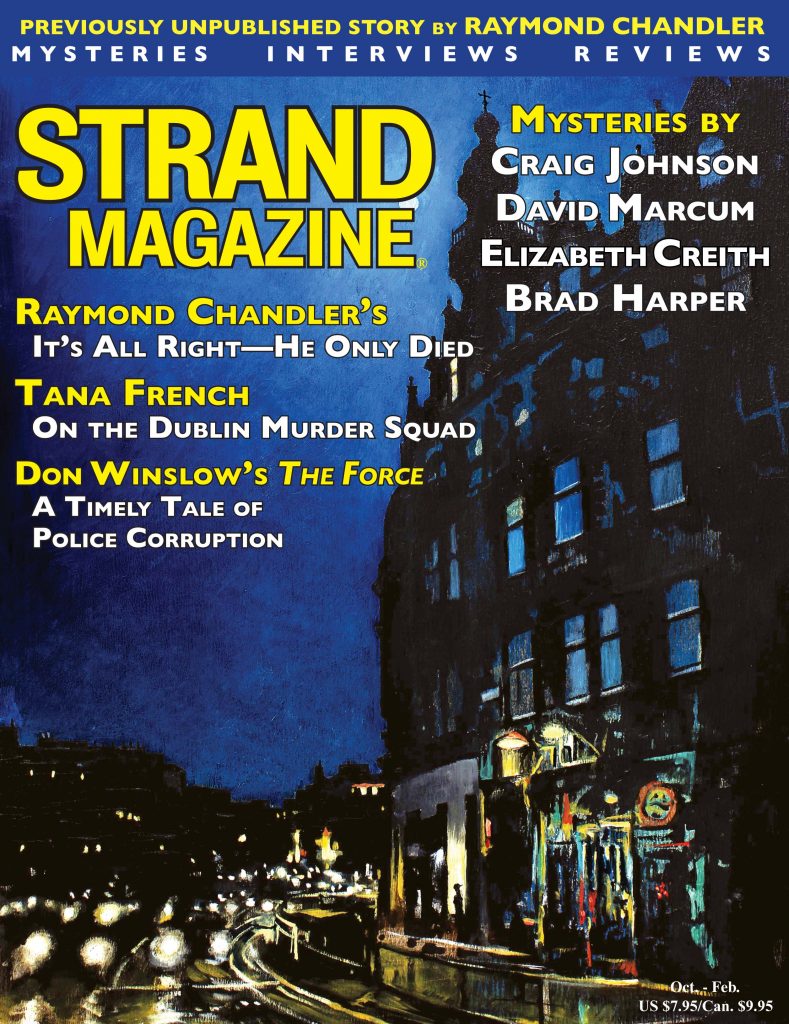The Legacy of Raymond Chandler Part II
A ‘Lost’ Generation, Found: Raymond Chandler’s Legacy
Although physical violence and brutality have always existed as important facets of crime fiction, the early pioneers of the genre created a style of writing in which acts of violence came to symbolize the ugliness and unpredictability of society. In his novels, Chandler laid bare a depraved, dog-eat-dog world by stripping back society’s layers to expose its rotten and corrupt core. While post-Vietnam writers also utilized this, the key difference is the explicit and savage articulation of violence, which has significantly altered the tone and texture of the genre in the wake of the Vietnam War. Although the stories are violent, that violence has been shifted onto the protagonists: these are antagonistic, imperfect characters who are just as likely to commit homicide as suicide. Their traumatizing experiences cultivated in them an unashamed pragmatism and helped shape their individual sense of reason.
James Crumley, in particular, has masterfully re-created Philip Marlowe’s disillusionment and cynicism for a contemporary audience. A veteran of the war in Southeast Asia, Crumley identified with Chandler’s characterization of a troubled detective and incorporated similarly traumatized characters into his own series of novels, admitting, “without [Chandler’s] books, my books would be completely different” (Contemporary Authors 67).
Contrasting wildly with the reluctance of prior audiences to read novels concerning disenchanted veterans, Crumley, who considered himself Chandler’s “bastard child” (ibid), used the genre in the 1970s to formulate a crime literature that forcefully incorporated a war-traumatized protagonist into the disillusionment of the era. Panek notes that whereas experiences of First World War soldiers “never directly enter the fiction of the old writers […] Not so with current writers” (214). In contrast to Marlowe’s internalized trauma, post-Vietnam detectives openly display their suffering. Tapping into the era’s ambiguous war and corrupt politics, writers (whether veterans themselves or not) including Crumley, Walter Mosley, and James Ellroy, were able to create imperfect and paranoid characters. These writers brought together “the hard-boiled hero and the complexity and confusion unique to the last quarter of the twentieth century in the United States, and who “participated in the renaissance of hard-boiled fiction” (Panek, 5).
James Crumley acknowledged that Chandler’s novels—where characterization and style are of major importance—greatly influenced his decision to write crime fiction. Consequently, his own work became heavily influenced and developed into contemporary interpretations of Chandler’s novels. Thus, Crumley managed to expand Chandler’s hard-boiled style while at the same time dissolving the boundaries that separated it from others. Although Crumley’s work incorporates an increased level of violence that is representative of post-Vietnam society, his novels are essentially contemporary adaptations of Chandler’s Marlowe stories.
Although “war noir” reached its zenith with the Vietnam War, it is a style that can be traced back to Chandler and his Philip Marlowe novels. The combination of war themes and the noir style made Chandler’s work so subtly different from his contemporaries that critics failed to recognize its significance within the genre. What made Chandler’s work so appealing and relevant to the writers of the Vietnam era were exactly the themes and motifs that they themselves would take to heart in their own works. And so, by laying the groundwork for a significant reworking of the hard-boiled style, Chandler enabled post-Vietnam writers to break down the generic boundaries of detective fiction and cultivate a style that now holds a vitally important position in American literary history.
Sources
- Cochran, David. American Noir: Underground Writers and Filmmakers of the Postwar Era (Washington DC: Smithsonian Institution Press, 2000).
- Contemporary Authors (Detroit: Gale Group, Vol 121, 2004).
- Haut, Woody, Neon Noir: Contemporary American Crime Fiction (London: Serpent’s Tail, 1999).
- Panek, LeRoy, New Hard-Boiled Writers 1970s-1990s (Bowling Green, OH: Bowling Green Unviersity Press, 2000) .
· Sathis, Lou, “Charles Willeford: New Hope for the Living,” introduction to Willeford, Charles, High Priest of California and Wild Wives (San Francisco: Re/Search, 1987).
- Trott, Sarah. War Noir: Raymond Chandler and the Detective as Veteran in American Fiction (Jackson, MS: University Press of Mississippi, 2016).


